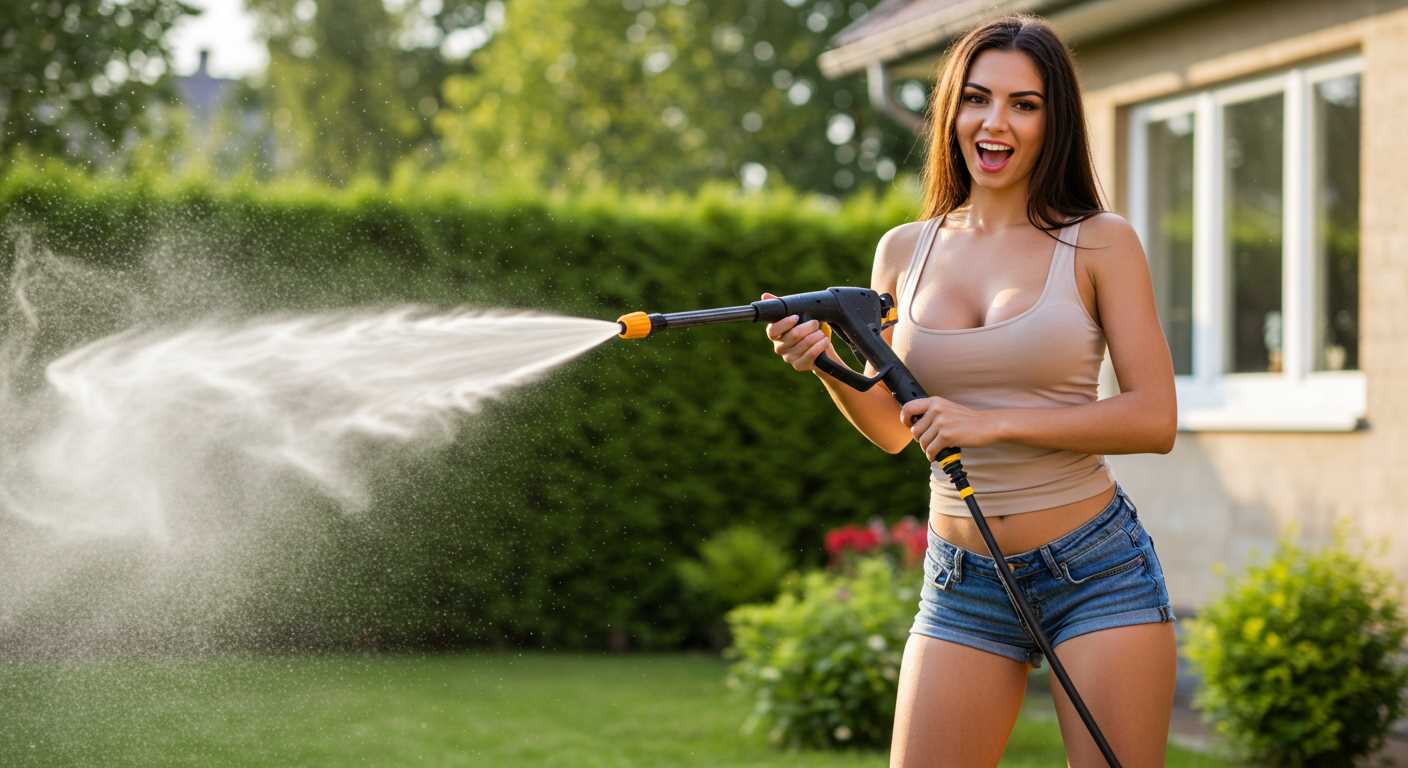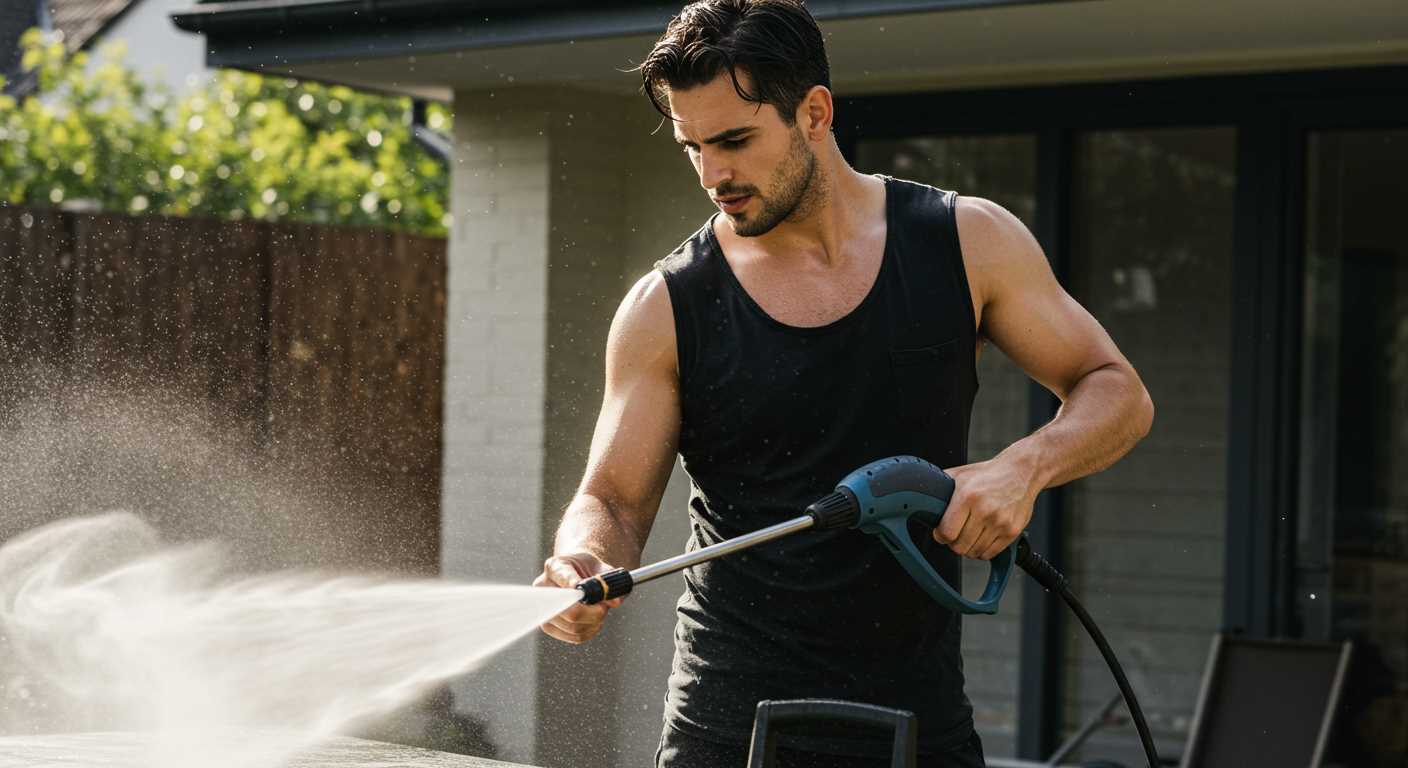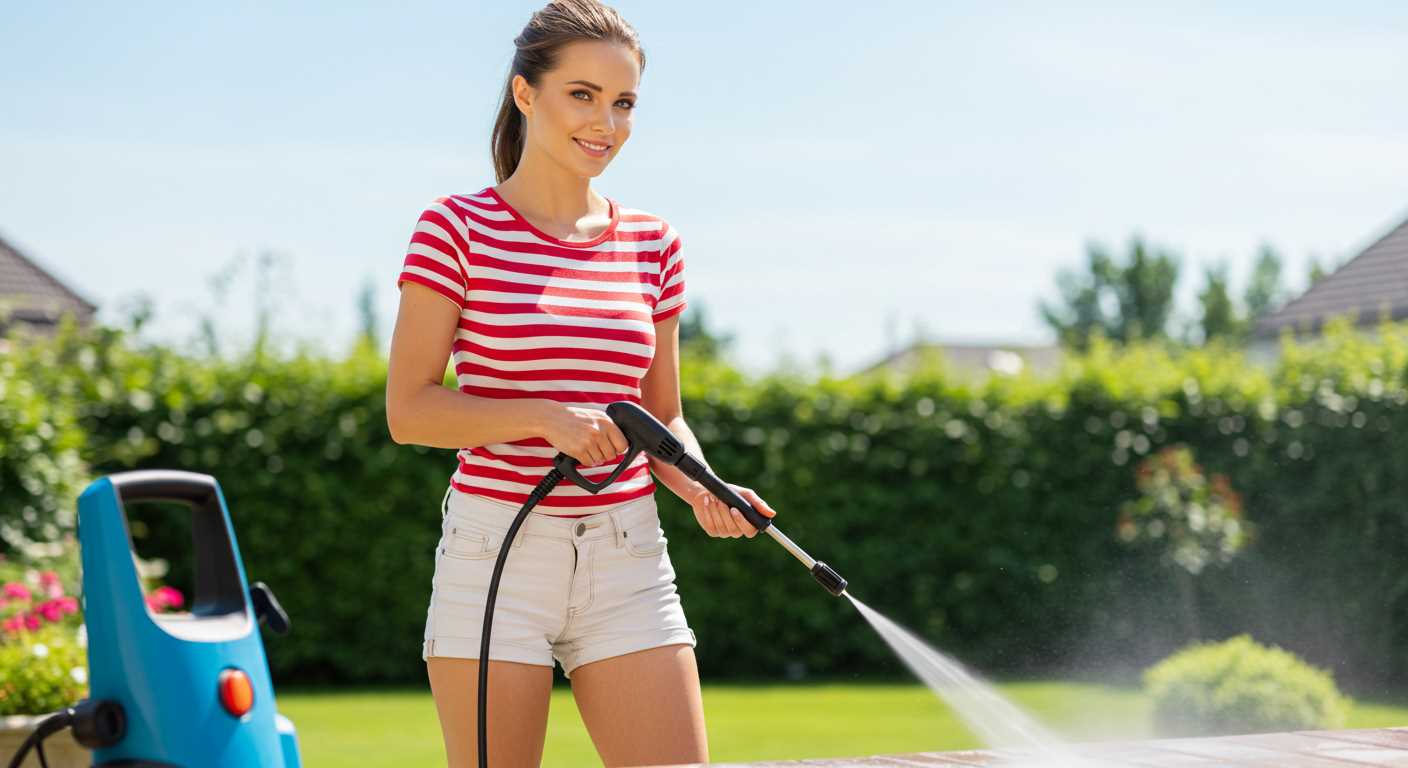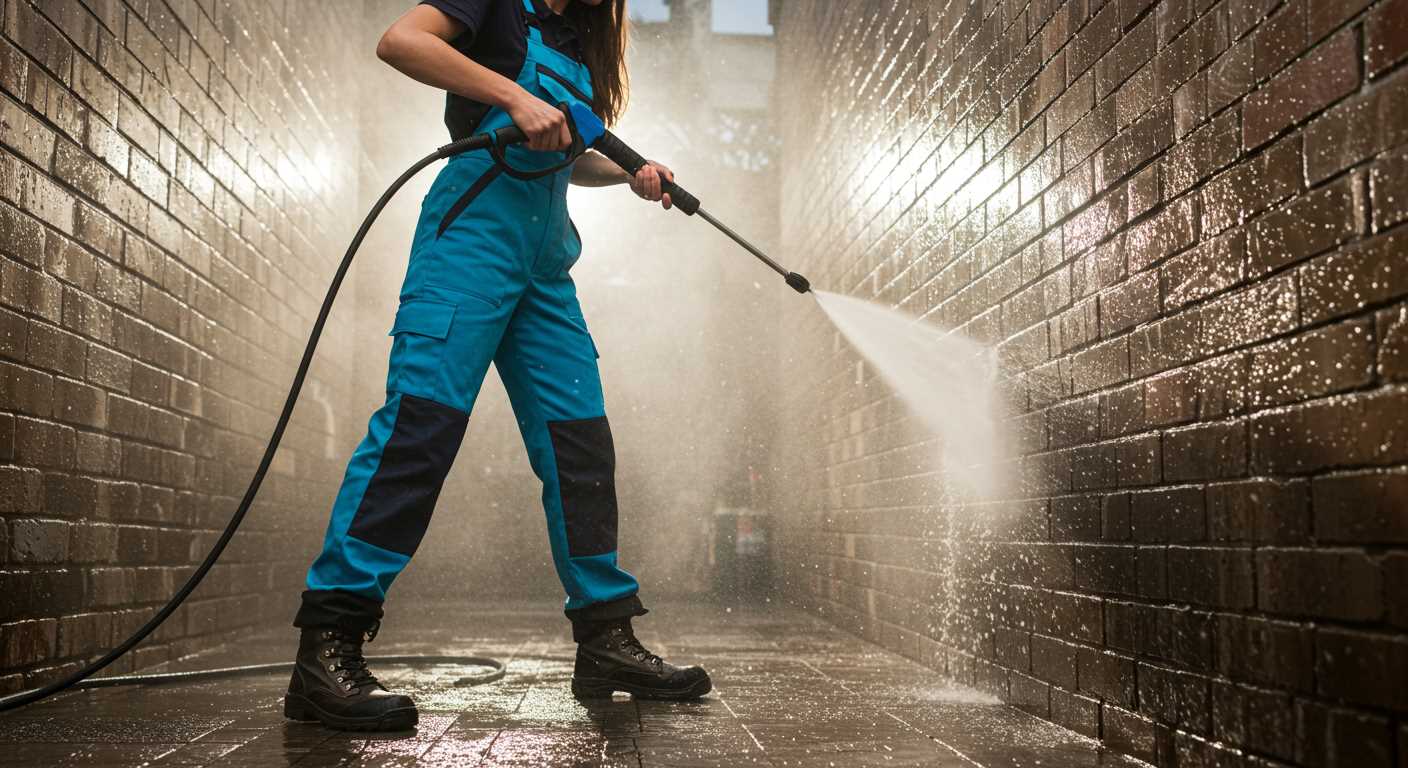



For most residential tasks, a unit delivering between 1300 and 2300 PSI is adequate. This range efficiently removes dirt and grime from patios, driveway surfaces, and vehicles without damaging surfaces. If you plan to tackle tougher projects, such as heavy-duty cleaning of industrial equipment or surfaces with stubborn stains, consider models that offer 2500 PSI and above.
When selecting a cleaner, consider flow rate in GPM (gallons per minute) as well; a higher GPM means better water flow, enhancing cleaning capability. Look for a balance between pressure and flow rate, ideally 2.5 GPM or more, which ensures a thorough clean without excessive work.
Keep in mind, using excessively high pressure can cause damage. For instance, wooden decks or painted surfaces can suffer if the power is too intense. It’s wise to opt for adjustable models to tailor the pressure according to different cleaning needs.
Be aware of the type of nozzle you’ll use, as this impacts water distribution and cleaning efficacy. A 25-degree nozzle is often versatile enough for most home projects, while 15-degree or 0-degree nozzles are suited for more specialised tasks requiring focused pressure.
When determining specifications, always assess your cleaning objectives first. Matching the power to the task ensures not only effective cleaning but also longevity of both the equipment and the surfaces being cleaned.
Determining the Required Strength of a Power Cleaning Device

For most domestic tasks, a model with a rating between 1,500 to 2,500 psi (pounds per square inch) is typically sufficient. This range allows you to tackle common projects like cleaning patios, driveways, and garden furniture efficiently.
For more demanding jobs, such as removing heavy mildew or grease from surfaces, opt for units that reach up to 3,000 psi. These higher-rated machines can also handle larger vehicles, provide deeper cleaning for brick or stone surfaces, and strip paint more effectively.
It’s also important to consider the flow rate, expressed in gallons per minute (GPM). A higher GPM value, ideally 2.0 to 3.0, enhances the cleaning process by increasing water output, thus allowing for better rinsing and quicker job completion.
When assessing the required specifications, think about the surfaces you’ll be working on. If your cleaning needs include delicate items, choose a lower psi setting or adjustable spray nozzle to prevent damage. Conversely, hard surfaces or extensive projects will benefit from a more robust machine.
Check for additional features such as interchangeable nozzles, detergent tanks, and wheeled designs for easy mobility. These factors can enhance usability and efficiency, ensuring that the chosen device meets specific cleaning demands effectively.
Understanding Pressure Washer Ratings
For optimal performance, I recommend considering the following ratings when evaluating a cleaning machine:
- PSI (Pounds per Square Inch): This measures the water pressure and is critical for the efficacy of tasks. A range of 1300 to 1900 PSI is ideal for light-duty tasks, while a range of 2000 to 3000 PSI suits medium to heavy-duty cleaning jobs.
- GPM (Gallons per Minute): This indicates the volume of water flow. For effective cleaning, a higher GPM is preferable. Typically, 1.2 to 1.6 GPM suffices for lighter applications, while 2.0 to 2.5 GPM is more suitable for tougher jobs, ensuring efficient dirt and grime removal.
- CU (Cleaning Units): This rating combines PSI and GPM and provides a clearer picture of washing capability. To calculate CU, multiply PSI by GPM. A CU of 2500 can tackle most household chores, while 5000 CU may be necessary for commercial use.
- Motor Power: Electric machines typically range from 12 to 15 amps, while gas models often have considerably higher power output. Choosing the right motor is essential for the type of tasks expected.
Understand that different applications will require different specifications. For example, mobile cleaning units may need lower ratings for convenience, while heavy machinery cleaning will necessitate robust output. Always match the equipment to the intended tasks for the best results.
In my experience, investing in a reliable machine with the right ratings pays off in the long term, yielding better results and reducing the risk of equipment damage or inefficiencies.
Choosing the Right PSI for Different Surfaces
The optimal PSI setting varies significantly depending on the material being cleaned. Here’s a concise breakdown to help you make an informed choice:
Surface Type and Recommended PSI
| Surface Type | Recommended PSI |
|---|---|
| Wood (soft) | 500 – 1,200 |
| Vinyl siding | 1,200 – 1,500 |
| Concrete | 2,500 – 3,000 |
| Brick | 1,500 – 2,000 |
| Metal | 1,300 – 2,000 |
For wooden surfaces, select a lower PSI to avoid damage. Softwoods require gentler handling, while hardwoods may withstand a higher setting. Vinyl siding can handle moderate pressure, but it’s wise to keep it below 1,500 PSI to prevent warping or stripping. Concrete is more resilient, so a stronger setting effectively clears stubborn stains and grime. Brick can be tricky, necessitating a balanced approach to avoid dislodging mortar. Finally, metal surfaces tolerate a range between 1,300 to 2,000 PSI, but a cautious approach with a focus on cleaning agents often yields the best results.
Assess environmental conditions, the age of the material, and specific stains when adjusting pressure levels. Familiarising yourself with these details will significantly enhance your cleaning strategy.
Determining GPM Requirements for Your Cleaning Tasks

To select an appropriate unit for your cleaning endeavors, aim for a flow rate of at least 2.0 to 3.0 gallons per minute (GPM). This measurement significantly impacts how quickly one can complete extensive cleaning jobs.
For residential tasks such as cleaning vehicles or patios, a rate of 1.5 to 2.5 GPM is often sufficient. If your focus shifts to larger areas or tougher stains, consider units delivering over 3.0 GPM. The increased flow aids in rinsing away debris and soap, improving the overall cleaning experience.
Specific Task Guidelines
For cleaning delicate surfaces like cars, a flow rate in the range of 1.5 to 2.0 GPM is ideal. A higher GPM here can lead to excessive water usage and potential oversaturation. For decking or concrete surfaces, targets should be between 2.5 and 4.0 GPM, ensuring efficient dirt removal and rinse-off. Heavy-duty projects, like industrial cleaning, may require units exceeding 3.5 GPM, offering the muscle needed to dislodge ingrained contaminants.
Product Recommendations
If you’re often tackling varied tasks, consider a versatile model with an adjustable flow rate. Brands like Kärcher and Sun Joe feature recommended products that allow users to modify their GPM settings based on the job at hand. Using machines that accommodate diverse flow rates can maximise productivity and minimise water wastage.
In summary, aligning GPM with the type of cleaning task greatly influences efficiency. Assess your needs carefully and choose a machine that matches those requirements to achieve the best results.
Evaluating the Importance of Engine Type and Power Source
When selecting cleaning equipment, the engine type and source of power significantly impact performance and usability. For home use, electric models between 1500 and 2000 watts suffice, easily handling light tasks like vehicle washing and patio cleaning. However, for heavier duties, such as removing grime from concrete or prepping surfaces for paint, opting for gas-powered units is advisable, as they often provide higher reliability and sustained pressure without needing frequent breaks.
The choice between electric and gas hinges on several factors. Gas engines typically deliver increased pressure and flow rates, making them suitable for larger or more demanding projects. Electric units, while easier to maintain and quieter, may struggle with prolonged use under heavy load.
Look for engines with variable PSI settings if versatility is key for your cleaning routine. This flexibility allows adjustment for different tasks without swapping equipment. Additionally, the design of the engine influences fuel efficiency and can affect overall longevity. Engines labelled as “commercial grade” not only offer more power but often feature enhanced durability.
Lastly, consider the availability of replacement parts and service options for the engine type you choose. A robust support network ensures that you can maintain optimal performance over the lifespan of your equipment, making your investment more worthwhile.
Assessing Your Cleaning Needs: Residential vs. Commercial
For home use, a unit with a minimum of 1300 to 2000 PSI often suffices for tasks like patio cleaning, vehicle maintenance, and home siding. This range accommodates most residential surfaces without causing damage. GPM should typically fall between 1.2 and 2.4 for effective dirt removal. Regular maintenance or heavy-duty tasks may require a higher rating.
In contrast, commercial applications necessitate robust equipment, usually above 2000 PSI and upwards to 4000 PSI. This strength tackles tougher materials and filth, such as industrial grease and grime found in factories or construction sites. A GPM of 3 to 5 is critical, providing quicker cleaning times, which translates to higher productivity on the job.
Consider the frequency of use when selecting your device. For infrequent domestic tasks, a lighter model with ample PSI and GPM is suitable. However, for businesses reliant on equipment utilization daily, investing in a commercial-grade version will ensure longevity and performance efficiency.
The surface being cleaned also dictates choice. Concrete, brick, and metal surfaces require higher PSI ratings compared to softer materials like wood or vinyl siding. Understanding this can prevent costly damage to the surface.
Ultimately, identifying the purpose and expected frequency of usage is key to selecting precisely the right tools for your needs, whether for home or commercial use.
Matching Nozzle Types to Pressure Levels
The selection of the right nozzle type is crucial for achieving optimal cleaning results. Each nozzle is engineered to function with specific ranges of water pressure, allowing for versatility depending on the surface type and cleaning requirements.
Types of Nozzles
- Zero-Degree Nozzle: This produces a highly concentrated jet and is suitable for tough stains on solid surfaces. It works best with high-pressure outputs, typically above 3000 PSI.
- 15-Degree Nozzle: Ideal for stripped paint and cleaning concrete, this nozzle operates effectively within the 2500 to 3000 PSI range.
- 25-Degree Nozzle: A versatile choice for general cleaning tasks, it functions well at pressures between 2000 and 2500 PSI, suitable for surfaces like decks and patios.
- 40-Degree Nozzle: This nozzle is excellent for lighter tasks such as washing cars or windows. It should be used with a lower pressure, usually below 2000 PSI.
- Soap Nozzle: Generally a low-pressure option, around 300 PSI, used for applying detergents to enhance the cleaning process before rinsing.
Choosing the Right Nozzle

When pairing your nozzle with the appropriate pressure level, consider the cleaning task at hand:
- For deep cleaning of concrete or brick, opt for either the 0-degree or 15-degree nozzle with high PSI.
- For general outdoor cleaning, the 25-degree option will provide adequate results without risking damage to the surface.
- For delicate surfaces, use a 40-degree nozzle to prevent scratching or stripping protective coatings.
- Add a soap nozzle for thorough application of detergents on grease or grime.
In summary, understanding the interplay between nozzles and pressure settings will yield efficient cleaning outcomes while protecting surfaces from unnecessary damage. Always consider both nozzle type and pressure level to tailor your approach effectively.
Identifying Heavy-Duty vs. Light-Duty Applications

For serious tasks, such as removing stubborn oil stains from concrete or stripping paint from large surfaces, selecting a unit with a rating between 3000-4000 PSI is ideal. These models are designed to handle tough jobs and maintain performance without overheating, ensuring that the equipment lasts longer under strain.
Conversely, for lighter jobs, such as washing garden furniture or cleaning vehicles, a lower PSI range of 1200-1900 suffices. These units are more manageable for everyday tasks while still providing adequate cleaning power. It’s crucial to match the machine’s capabilities with the intended use to avoid unnecessary wear on the unit.
Understanding Your Cleaning Environment
Consider the surface types you’ll encounter. For instance, wooden decks require gentler handling with lower PSI levels to prevent damage, while brick or stone can withstand higher pressures without issue. If your applications involve a mix of surfaces, opt for adjustable pressure settings. This versatility will allow adapting the force as needed, enhancing the overall cleaning experience without risking damage.
Time Efficiency in Task Completion
Heavy-duty equipment often comes equipped with higher GPM (gallons per minute) ratings, which translates to faster cleaning. If you’re tackling large areas frequently, investing in a more powerful model will save time and effort in the long run. In contrast, light-duty models will suit those who undertake occasional cleaning tasks, prioritising convenience over speed.
Considering Accessories and Attachments for Better Performance
It’s imperative to explore various add-ons that can significantly enhance cleaning efficiency. One of my first recommendations is a surface cleaner attachment. This tool allows for uniform coverage over flat surfaces, reducing the time spent on tasks such as patio cleaning or driveway maintenance. With a rotary action, it tackles grime effectively and prevents streaking.
Choosing the right nozzle is also critical. Different spray patterns serve distinct purposes. A 0-degree nozzle offers a concentrated stream for tough stains, while a 40-degree nozzle provides a broader spray suitable for delicate cleaning. Investing in a quick-connect nozzle set can simplify transitioning between tasks.
Add-ons like extension wands are invaluable for hard-to-reach areas. A longer reach allows you to clean high surfaces like gutters or second-storey walls without the need for ladders. Additionally, consider detergent siphoning kits. These kits enable the application of cleaning solutions effectively, ensuring that surfaces are pre-treated for optimal results.
Don’t overlook the advantages of brush attachments. For surfaces like wood or vehicles, a brush can safely agitate dirt without causing damage. Finally, when it comes to storage, hose reels can help organise equipment and protect against wear and tear, enhancing longevity.
Overall, selecting the right accessories and attachments not only boosts performance but also adds versatility to your cleaning regimen. Each tool plays a specific role in achieving those impeccable results that everyone strives for.









